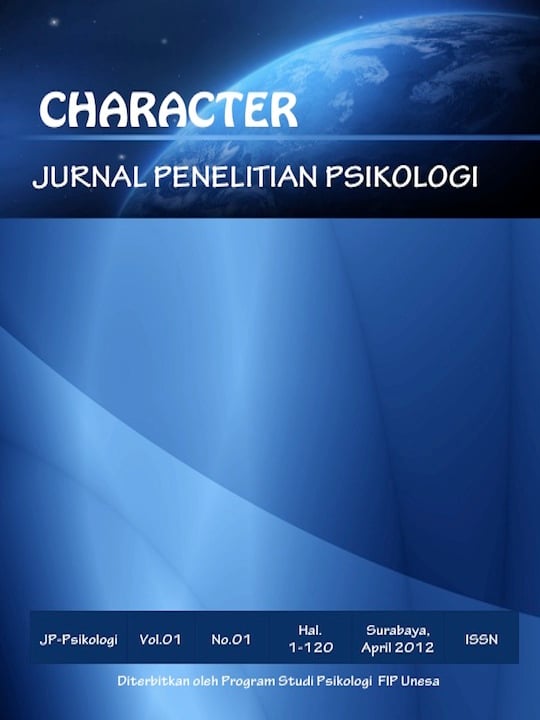HUBUNGAN QUARTER LIFE CRISIS DENGAN TURNOVER INTENTION PADA GENERASI MILENIAL KOTA SURABAYA
DOI:
https://doi.org/10.26740/cjpp.v8i9.48223Abstract
Abstrak
Indonesia pada saat ini sedang mengalami fenomena bonus demografi, dimana generasi milenial mendominasi dunia kerja. Generasi milenial yang mengalami fase quarter life crisis menjadikannya seringkali menghadapi krisis yang mencakup salah satunya di bidang pekerjaan. Hal ini ditunjukkan salah satunya dengan tingginya tingkat turnover pada generasi milenial. Tujuan penelitian ini adalah untuk mengetahui hubungan antara quarter life crisis dengan turnover intention pada generasi milenial di kota Surabaya. Subjek dalam penelitian adalah 351 orang generasi milenial yang tinggal di kota Surabaya, dengan kriteria berusia 24-29 tahun, dan sudah bekerja di tempat yang sama dalam waktu minimal satu tahun. Pengambilan sampel menggunakan teknik purposive sampling. Alat ukur yang digunakan adalah skala quarter life crisis berdasarkan 7 dimensi quarter life crisis, dan untuk mengukur turnover intention menggunakan alat ukur yang disusun berdasarkan tiga aspek turnover intention dari Mobley. Uji normalitas yang digunakan adalah uji Kolmogorov Smirnov mendapatkan signifikansi sebesar 0,197 sehingga penelitian ini berdistribusi normal. Uji hipotesis kedua variabel, menggunakan uji korelasi pearson dengan bantuan SPSS 24.0 for windows mendapatkan nilai signifikansi sebesar 0,602 menunjukkan hasil bahwa terdapat hubungan derajat sedang antara quarter life crisis dengan turnover intention pada generasi milenial di kota Surabaya.
Kata Kunci: quarter life crisis, turnover intention, generasi milenial
Abstract
Indonesia is currently experiencing a demographic bonus phenomenon, where the millennial generation Indonesia is currently experiencing a demographic bonus phenomenon, where the millennial generation dominates the world of work. The millennial generation that experiences the phase of quarter life crisis often faces the crisis that includes in the field of work. This is shown by the high turnover rate in the millennial generation. This study aims to find out the relationship between quarter life crisis and turnover intention in the millennial generation in the city of Surabaya. The subjects in the study were 351 people of millennial generation who live in the city of Surabaya, with criteria aged 24-29 years, and have worked for at least one year in the same place. The sampling technique used a purposive sampling technique. The measuring instrument used was the quarter life crisis scale based on 7 dimensions of quarter life crisis, and to measure turnover intention used a measuring instrument that is based on three aspects of turnover intention from Mobley. The normality test used was the Kolmogorov-Smirnov test, which obtains a significance value of 0,197 so that this study is normally distributed. Hypothesis testing of the two variables used the Pearson correlation test with the help of SPSS 24.0 for windows, which obtains a significance value of 0,602, it showed the results that there is a moderate degree relationship between quarter life crisis and turnover intention in the millennial generation in the city of Surabaya.
Keywords: quarter life crisis, turnover intention, millennial generation
Downloads
Downloads
Published
How to Cite
Issue
Section
License
Authors who publish in this journal agree to the following terms:
Copyright in any article is held by the author.
The author grants the journal, publication rights with the work simultaneously licensed under a Creative Commons Attribution License that allows others to share the work with an acknowledgment of the work's authorship and initial publication in this journal.
Authors may enter into separate, additional contractual arrangements for the non-exclusive distribution of the journal's published version of the work (e.g., posting it to an institutional repository or publishing it in a book), with an acknowledgment of its initial publication in this journal.
Authors are permitted and encouraged to post their work online (e.g., in an institutional repository or on their website) prior to and during the submission process, as this can lead to productive exchanges, as well as earlier and greater citation of published work.
 Abstract views: 1611
,
Abstract views: 1611
, PDF Downloads: 2482
PDF Downloads: 2482





